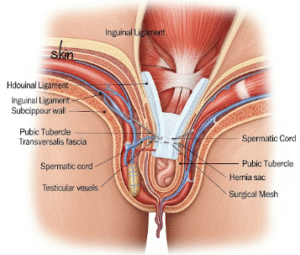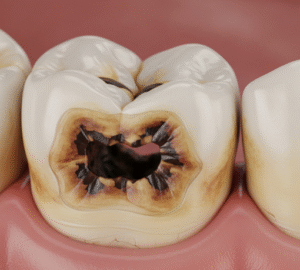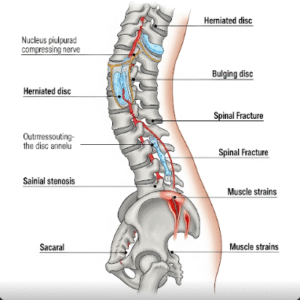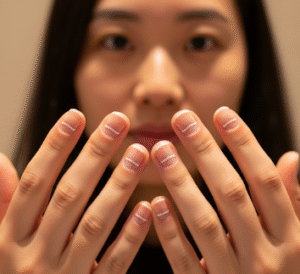Overview
Angiokeratoma is a rare, benign skin condition characterized by small, dark red to black papules (bumps) caused by dilated blood vessels and thickened skin. These lesions can appear on various parts of the body, including the genital area, lower limbs, or torso. While typically harmless, angiokeratomas may sometimes bleed or signal underlying systemic disorders such as Fabry disease.
What is Angiokeratoma?
Angiokeratoma refers to a group of vascular skin lesions formed due to superficial capillary dilation in the upper dermis, often with overlying epidermal thickening. The condition can be:
- Solitary or localized: A single lesion often found on legs or arms.
- Angiokeratoma of Fordyce: Multiple lesions on the scrotum or vulva.
- Angiokeratoma corporis diffusum: Widespread lesions often associated with metabolic disorders like Fabry disease.
- Angiokeratoma circumscriptum: Clustered lesions present from birth or early childhood, typically on the lower limbs.
Symptoms
- Small, dark red, purple, or black papules
- Rough or wart-like texture
- Bleeding when scratched or traumatized
- Itching or discomfort (occasionally)
- In Fabry disease: accompanied by systemic symptoms (e.g., pain, kidney issues, heart problems)
Causes
- Capillary dilation in the superficial skin layer
- Trauma or chronic irritation (e.g., on the scrotum or legs)
- Genetic mutations, especially in angiokeratoma corporis diffusum (e.g., Fabry disease due to GLA gene mutation)
- Venous hypertension in affected areas
- Congenital factors (in angiokeratoma circumscriptum)
Risk Factors
- Male gender (more common in Fordyce type)
- Genetic disorders (e.g., Fabry disease)
- Chronic venous insufficiency
- Increasing age
- Family history of similar skin lesions
- Trauma or prolonged friction to the skin
Complications
- Bleeding from lesions, especially after trauma or shaving
- Cosmetic concerns, particularly in visible areas
- Misdiagnosis as malignant skin lesions
- Association with Fabry disease, a potentially serious systemic disorder if undiagnosed
Prevention
- Avoid trauma or friction to commonly affected areas
- Regular skin monitoring for unusual or new lesions
- Genetic screening if family history suggests Fabry disease
- Compression therapy for chronic venous insufficiency
- Early evaluation of skin lesions to differentiate from malignancies
Treatment Options in Korea
South Korea offers comprehensive dermatological and genetic care for angiokeratoma, especially in advanced medical centers:
Dermatological Treatments:
- Laser therapy (e.g., pulsed dye laser, Nd:YAG laser) to remove or reduce lesion visibility
- Cryotherapy using liquid nitrogen for destruction of superficial lesions
- Electrosurgery or excision in case of solitary or symptomatic lesions
- Topical treatments may be used for minor cases or post-treatment care
Fabry Disease-Related Angiokeratoma:
- Genetic testing and enzyme assays to confirm Fabry disease
- Enzyme replacement therapy (ERT) such as agalsidase beta
- Multispecialty management including nephrology, cardiology, and neurology for systemic involvement













